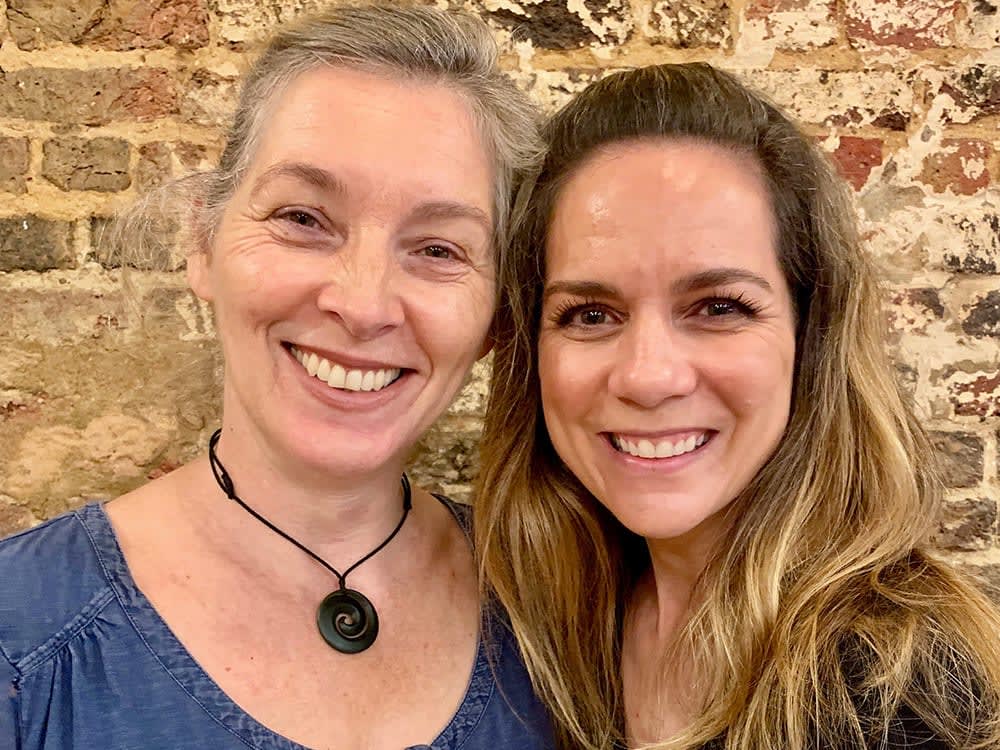Michala Banas has featured regularly on Melbourne Theatre Company stages, but her new role sees her engaged behind the scenes, working with the Company as an intimacy coordinator.
If you don’t know what an intimacy coordinator is, you’re not alone. After all, it’s one of the newest jobs in the stage and screen industries. Fundamentally, the role is akin to that of the stunt coordinator, except instead of stunts it’s all about coordinating intimate moments. This includes sex scenes and nudity but can also encompass anything from simulating birth to working closely with children.
‘If you have a fight or stunt in a show, you bring in a fight or a stunt coordinator,’ Banas explains. ‘If you have a dance routine in the show, you bring in a choreographer. So if you have an intimate moment in the show, that’s where the intimacy coordinator comes in.’
The rise of Intimacy Coordinators
In the wake of the #MeToo movement, the screen industry has led the charge. In October 2018, HBO announced it would now be hiring intimacy coordinators for all of its programs featuring intimate scenes; a month earlier, director David Simon (The Wire, The Deuce) told Rolling Stone he would never work without one again. Netflix, Amazon and the BBC introduced UK-based intimacy coordinator Ita O’Brien to the sets of 2019 shows Sex Education, Hanna and Gentleman Jack.
O’Brien also works extensively in theatre and is an acknowledged leader in the field. She trained and continues to mentor Banas, who has since become one of Australia’s first intimacy coordinators. ‘As soon as I finished my training, I let Brett and Virginia know,’ she says, referring to MTC’s artistic director Brett Sheehy and executive director Virginia Lovett. ‘They set aside an hour, and I had a meeting with these really important, very busy people, and got to speak about what I’ve learned and how it could be implemented should they choose. And pretty much on the spot, Brett was like “we should just make this how MTC works.” And so they got behind it.’
Not long after, she began working on Kiss of the Spider Woman, immediately followed by Home, I’m Darling, Torch the Place and Emerald City.

Adam-Jon Fiorentino and Ainsley Melham worked with Banas in MTC's Kiss of the Spider Woman. Photo: Jeff Busby
Let’s talk about sex
Speaking about the necessity of this kind of role, Banas notes there’s long been ‘an assumption that if you’re an actor you’re comfortable being nude, you’re comfortable doing sex scenes and kissing people. And that is absolutely not true! We’re just as terrified and nervous about doing that kind of work as you would be if you were an accountant having to step into that role. It’s uncomfortable. It’s difficult. And it’s confronting.’
It’s because of this unique discomfort, Banas believes, that people have previously not wanted to ‘break it down and discuss it’, certainly not in the detailed way in which an intimacy coordinator talks about sex. ‘Because it’s embarrassing and awkward. But if you can get past the awkwardness, that’s where you can really make it comfortable and safe.’
‘Unlike a sword fight, there’s physical risk, there’s emotional risk and there’s mental risk. So instead of saying “just figure it out on the day”, an intimacy coordinator carefully choreographs the scene with the relevant cast and crew.’
At the crux of it is making the workplace safe for actors to do their job. The stage and screen are unique workplaces ‘but they are a workplace,’ Banas reminds us. ‘In a fight scene you would never say to two actors “here are two swords, go and figure out something or just do it on the day”, but this is often what happens with sex scenes or with intimate scenes.’
The irony is that with a fight scene, the risk posed to the actors is predominantly physical, but with an intimate scene there’s more than one risk. ‘Unlike a sword fight, there’s physical risk, there’s emotional risk and there’s mental risk. So instead of saying “just figure it out on the day”, an intimacy coordinator carefully choreographs the scene with the relevant cast and crew’ in a way that ensures physical, psychological and emotional safety for all involved.
The mechanics of coordinating intimacy
So how, exactly, do they do this? Banas explains: ‘I have a conversation with the director and the actors about what the scene is and how it’s going to be staged. And then I go through what’s called an agreement of touch with the two actors, which is basically mapping on the body where they are and are not comfortable being touched by the other person. This ensures that there are really clear boundaries; so if I have a kissing scene with someone and they’re not comfortable being touched on the neck, I know not to touch them on the neck. But I can touch them on the shoulder, or on the face, if that’s been agreed upon.’
Elaborating further, she notes that an agreement of touch is not set in stone; it can change from day to day, or even hour to hour, depending on the actors’ circumstances. If an actor comes into work one day with a head cold, or a cold sore, the agreement may need to be altered for the safety and comfort of all.
When choreographing a scene, Banas often uses an articulated wooden artists’ mannequin. These are especially useful if a director doesn’t want to say or doesn’t know the correct terminology; they can simply model it with the mannequin. ‘Instead of saying “from behind” – there’s myriad ways you can approach someone sexually from behind – we use these dolls. Or drawings, or a Kama Sutra app. They can point to it and say “that one, can we get into that position?” and the actors can say “oh I don’t think my leg will go that way because I’ve got a bit of a sore hip” or whatever.’

Photo by Marco Bianchetti on Unsplash
Freedom in boundaries
One thing Banas is keen to emphasise is that having an intimacy coordinator on set doesn’t strip away an actor’s spontaneity and freedom. ‘It’s revelatory for a lot of people because they hadn’t considered that this might be a more freeing way to work. It sounds like it’s restrictive, but it’s not: you have to have permission and you have to have boundaries, but once you have those it’s actually more freeing, more liberating.’
Another key part of Banas’s role is to act as a safety buffer between two people, a kind of Switzerland in human form. ‘Even if there’s a really great working relationship, sometimes an actor won’t feel comfortable saying something – to another actor or to the director.’ For example, someone might confide in her that their kissing scene partner has bad breath. Banas can then step in without pointing fingers or making those involved feel uncomfortable. ‘I’ll come in and go “hey everyone, just remember these are the rules: we all have to brush our teeth and have a mint before we do any intimate scene; and make sure you’re wearing deodorant and not too much perfume.” That way, no one has to feel awkward about going “hey, can you have a mint.”’
The time is now
As an actor with more than three decades of experience, Banas has seen and heard it all when it comes to sex and intimacy on the stage and screen. She acknowledges that the #MeToo and Time’s Up movements have played a part in the growing demand for intimacy coordinators, but doesn’t like to focus on the way things were done in the past. Instead, she prefers to use her new role to ‘help them have a better experience with it moving forward.’
She emphasises, however, that the role is not designed to combat sexual harassment in the workplace, but her being in the room and doing what she does has a knock-on effect ‘because it puts the need to ask for consent in the fore of people’s minds.’
A cultural change

Ita O'Brien & Michala Banas. Photo: supplied
Banas is keen for the change to start early in a performers’ career. ‘[Actors] don’t get taught in drama school how to do a screen kiss or a stage kiss. Not logistically.’ She would, therefore, like to see intimacy coordination taught in drama schools, and to have ‘this education starting from there, so that young producers, filmmakers, theatre makers, performers, stage managers are all getting educated about how to handle this work moving forward, so that it just becomes second nature.’
Ultimately, she hopes that the work spearheads a cultural change within the industry. ‘I am conscious that, in some ways, I’m pioneering something – and so far it’s been really embraced.’ She is equally aware, however, that a lot of medium- to small-sized theatre companies can’t afford to hire an intimacy coordinator. But this is where education comes in. ‘There are guidelines online that you can look at and I think that if you’ve got the right intention that’s a really great starting point. It’s going to take time, but it’s happening and I’m thrilled that I get to be part of that.’
Best practice intimacy on set guidelines can be found at intimacyonset.com.
Published on 17 January 2020





